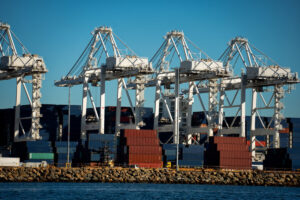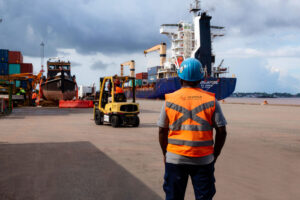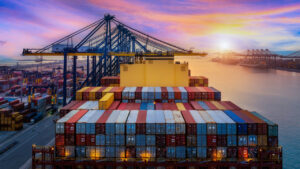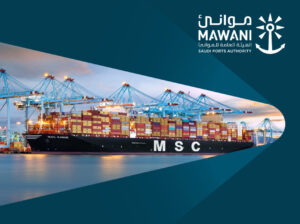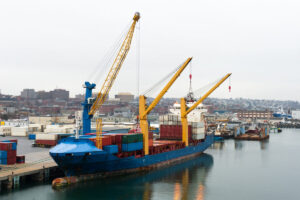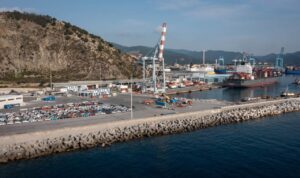The Port of Singapore is will launch an Electronic Bill of Lading (E-B/L) as part of plans to expand its role as a major port hub and leading international maritime centre, according to the Maritime and Port Authority of Singapore (MPA).
The maritime industry has come under severe pressure since the beginning of the pandemic and emphasised the challenges many of the largest hubs face, namely how to continue processing an ever-increasing amount of goods while cutting emissions and keeping workers safe.
This has caused some ports to rethink how they operate and look to new technologies to enable trade in a safe manner.
“As a global hub port and leading international maritime centre, Singapore cannot afford to be complacent,” Kenneth Lim, Assistant Chief Executive (Industry), MPA, told PTI ahead of Smart Digital Ports of the Future 2021.
Lim said that while global supply chains were beginning to shift before the pandemic, the change has accelerated as consumer habits and expectations have altered.
“Moving forward, MPA plans to create an integrated, innovative and inclusive Maritime Singapore ecosystem.
“One of the projects that my teams in technology and industry development are working on is the electronic bill of lading initiative.
“Besides developing the actual solution for electronic bill of lading that meets the industry’s needs, we engage shipping companies and traders closely to recognise electronic transferable records like the bill of lading in Singapore’s law.
“Therefore, Singapore’s maritime legal and arbitration could offer advice or be involved in litigation as well as arbitration as more supply chains choose to use electronic bill of lading.
Reacting to a changing market
Lim said companies are re-assessing their operations and in some cases are deciding to situate parts of the production process to enhance resilience and mitigate trade barriers.
This has meant some stakeholders have had to change how they operate to meet demand, improve efficiency and be better facilitators of trade, according to Lim, with notable examples being PSA International launching the CALISTA platform and CMA CGM moving into air freight.
“Globalisation will continue, and this affects how supply chains are structured to support cross-border trade. Customers will place greater premium on factors such as end-to-end service, reliability and flexibility,” Lim explained.
This trend will accelerate as trade grows and consumer demands increase, which has led to suggestions from some experts that the maritime industry will become more collaborative, with stakeholders more willing to invest in digital technology than in the past.
The Power of Data Sharing
A particularly important area has been data sharing and the creation of international standards to enable the flow of critical of information. Lim said there is a growing understanding of how important data sharing is and the MPA is looking to take the initiative.
“With the rise of digital platforms in the maritime industry, we need to harmonise the data standards so that data can flow effectively from one platform to another with minimum human intervention,” Lim said.
“More companies are aware of the need to digitalise, and MPA is committed to work together with the industry to agree and align to common standards.
“Therefore, we signed a MoU last year with PSA, GeTS, Port of Rotterdam, TradeLens and CargoSmart to develop and promote common standards pertaining to port clearance. We anticipate that more to companies would be keen to work with us on such data projects.”
The MPA has successfully collaborated with regional partners in numerous areas, including COVID-19 vaccination, sustainability and facilitating crew changes, which Lim said remains “a top priority” during the pandemic.
Lim said the MPA worked closely with its partners to establish the Singapore Shipping Tripartite Alliance Resilience (SG-STAR) Fund, the world’s first ground-up initiative to bring together different parts of the industry to ensure safe crew changes.
“This will ensure that vital sea trade remains intact and allow essential goods to continue to flow through the Port of Singapore, with Singapore playing a pivotal lead role in the global supply chain,” he claimed.
Additionally, the MPA is working with its partners to launch Joint Industry Projects (JIPs) on future fuels and efficiency solutions, such as electricity and ship call optimisation, to cut the industry’s carbon footprint.
To that end it has set up the Maritime GreenFuture Fund to direct and accelerate efforts in decarbonisation research and development and find solutions for sustainable maritime transport.
According to Lim, it will encompass a mix of incentives promoting a spectrum of solutions from encouraging R&D and pilot trials efforts, to incentivising companies to switch to green and renewable energies.
Looking to the future, Lim thinks collaboration between parties will help the industry overcome present and future obstacles.
“As we face more complex challenges, events such as SDP provides a meaningful platform for industry, port authorities and businesses to come together to discuss views, share case studies as well as trends that make a positive difference in the port and shipping sector,” Lim concluded.
“Through such exchanges, we get to learn more about the technological developments and network with like-minded colleagues globally.”


